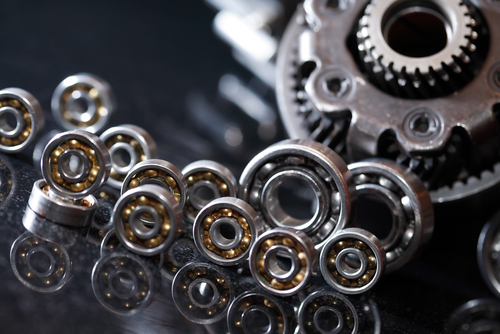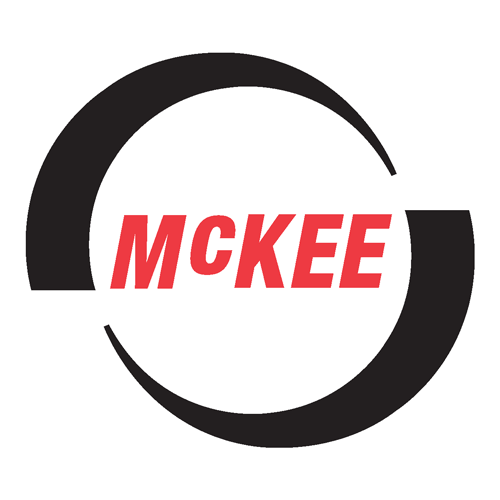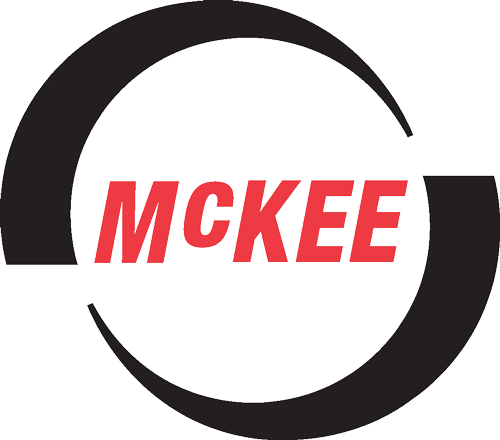
Understanding Industrial Bearings: Types, Applications, and When to Replace Them
August 9, 2025 1:24 pm Leave your thoughtsIndustrial bearings are essential components that support the smooth and efficient operation of machinery across countless sectors. From manufacturing facilities to agricultural equipment, bearings ensure the rotation and movement of mechanical parts while reducing friction and wear. Whether you’re running a fabrication plant or maintaining a fleet of machines in Lubbock, TX, understanding the different types of industrial bearings, their applications, and when to replace them is crucial for operational reliability and equipment longevity.
The Role and Importance of Industrial Bearings
Industrial bearings play a critical role in minimizing friction between moving parts within mechanical systems. They support loads — radial, axial, or a combination of both — while allowing for controlled motion between components. This function is essential in equipment like motors, pumps, conveyors, turbines, gearboxes, and other rotating machinery. A failing bearing can compromise machine performance, cause unscheduled downtime, and lead to significant repair costs.
In industries such as manufacturing, energy, transportation, and agriculture, the use of high-quality industrial bearings ensures that systems operate at peak efficiency. Given Lubbock’s strong industrial base — including agriculture and manufacturing — the demand for durable and efficient bearing solutions is ever-present. Choosing the right type and knowing how to maintain and replace them at the right time can greatly reduce overhead and increase productivity.
Types of Industrial Bearings
There are several types of industrial bearings, each designed to handle specific loads, speeds, and environmental conditions. Understanding these variations can help technicians and engineers in Lubbock, TX, and beyond select the appropriate bearing for their application.
Ball bearings are the most common type and are suitable for handling radial and light axial loads. They consist of balls enclosed between two races and are ideal for high-speed applications with low friction. These bearings are commonly used in electric motors, fans, and automotive components.
Roller bearings, on the other hand, use cylindrical rollers instead of balls. They are better suited for heavier radial loads and are commonly found in conveyor belt rollers, mining equipment, and heavy machinery. Variants include cylindrical roller bearings, tapered roller bearings, and spherical roller bearings — each with unique advantages depending on load orientation and alignment conditions.
Needle bearings are a type of roller bearing with long, thin rollers, offering a compact solution that handles high radial loads in limited space. These are particularly useful in automotive and aerospace applications where space-saving is crucial.
Thrust bearings are designed specifically to manage axial loads. They are often used in applications where parts rotate in one direction and need support for axial movement, such as turntables, cranes, and some pumps.
Lastly, there are plain bearings or bushings — simple, cost-effective bearings without rolling elements. While they generate more friction than rolling bearings, they’re reliable in slow-speed, high-load applications and are widely used in agriculture and construction equipment.
Applications of Bearings in Industrial Settings
Industrial bearings are foundational to machine operations in virtually every sector in Lubbock, TX. In manufacturing, they support rotating shafts in CNC machines, hydraulic presses, and lathes, ensuring precise movement and reducing wear. Their reliability directly impacts production output and machine lifespan.
In agriculture, where the economy of Lubbock thrives, bearings are used extensively in tractors, combines, balers, and irrigation equipment. Given the dusty and often harsh working conditions, the bearings used in agricultural machinery must be resilient to contaminants and moisture.
Transport and logistics also heavily rely on industrial bearings. Bearings ensure the smooth functioning of vehicle wheel hubs, transmissions, engines, and trailers. Long-haul trucking fleets in West Texas depend on robust bearing systems to reduce breakdowns and fuel consumption.
Energy sectors, including wind turbines and oilfields around Lubbock, also make use of specialized bearings. For instance, spherical roller bearings can accommodate shaft misalignments in wind turbines while handling heavy radial and axial loads — crucial for reliable power generation.
Each application demands bearings with specific tolerances, sealing options, and materials (e.g., stainless steel, ceramic, or polymer), which must be chosen based on speed, load, exposure to contaminants, and lubrication requirements.
When to Replace Bearings in Industrial Equipment
Knowing when to replace bearings in industrial equipment is vital to avoiding unexpected failures and costly downtime. Several warning signs indicate potential bearing failure and signal the need for inspection or replacement.
Unusual noise is often the first clue. A humming, grinding, or squealing sound from machinery may suggest a damaged or worn bearing. In rotating equipment, even a slight defect in the raceway or rolling elements can produce noticeable acoustic changes.
Increased vibration is another major indicator. Vibration analysis can detect changes in frequency patterns associated with early-stage bearing defects. Maintenance teams often use vibration sensors and software to monitor equipment health in real time.
Excess heat generation is also a symptom of bearing issues. Overheating may result from insufficient lubrication, contamination, or misalignment, all of which accelerate wear. Infrared thermography can help detect hotspots in bearings before they seize up or fail.
Performance degradation, such as decreased speed or efficiency, may occur when bearings begin to wear. Machines may require more power to perform the same task, or output quality may suffer.
Visible signs of wear, corrosion, or lubricant leakage can also signal the need for bearing replacement. If lubrication appears milky, discolored, or full of particles, the bearing environment may be compromised.
In heavy industries and farming operations in Lubbock, where machinery often operates in dusty, wet, or abrasive conditions, routine inspections should be a standard part of maintenance schedules. Bearings in such environments may have shorter lifespans than those in controlled indoor facilities.
Bearing Replacement Guide for Industrial Equipment
A timely and strategic approach to bearing replacement can prevent costly breakdowns and maximize machinery lifespan. While some bearings are designed to last for thousands of hours, real-world conditions in industrial environments mean that proactive monitoring and replacement are essential.
The first step in a successful bearing replacement strategy is proper diagnosis. Utilize tools like vibration analysis, temperature monitoring, and lubrication analysis to assess bearing condition without disassembling equipment. For critical systems, consider predictive maintenance programs that integrate sensors and IoT platforms.
Once a faulty bearing is identified, gather the correct replacement. Using the exact specification — including load rating, size, seal type, and material — is crucial. Replacing a bearing with an incorrect match can cause further damage or reduce performance. Always consult OEM manuals or technical guides.
Before installing the new bearing, inspect and clean the housing and shaft thoroughly. Contaminants or debris can lead to premature failure even in a brand-new bearing. Use clean gloves and tools during installation to avoid introducing foreign particles.
Ensure correct alignment and press fit during installation. Improper alignment can lead to uneven load distribution, while forcing a bearing into place with improper tools can cause internal damage. Using the right pullers, presses, or heating techniques is essential for safe installation.
After installation, apply the proper type and amount of lubricant. Over-greasing or under-greasing can both lead to overheating and failure. Consider automatic lubrication systems for machines that operate continuously or in hard-to-reach places.
Finally, document the replacement with date, bearing specifications, lubrication used, and any anomalies noted. This record-keeping helps create a maintenance history that can inform future decisions and detect patterns in equipment performance.
In Lubbock’s active industrial sectors — where weather conditions, dust, and heavy usage are commonplace — following a disciplined bearing replacement guide is more than a best practice; it’s a business necessity.
Conclusion
Understanding industrial bearings is not just the domain of engineers or maintenance staff. For businesses in Lubbock, TX, that rely on efficient, uninterrupted machine operations, knowing the types of industrial bearings, their applications, and when to replace them can directly impact profitability and productivity. From agricultural equipment braving West Texas dust to precision tools in manufacturing plants, bearings are the silent workhorses keeping everything moving. Investing in proper bearing maintenance and timely replacement is not only smart — it’s essential.
Need Cotton Mill & Cotton Gin Components in Lubbock, TX?
Welcome to M.B. McKee Company, Inc. M.B. McKee Company, Inc. has been serving our local community of Lubbock since 1943. Locally owned and family operated, we provide great customer service and solutions for ongoing issues. With over 70 years of experience, our products, services, and engineering will always exceed your expectations. Our products include bearings, belts, chains, conveyor systems, gearing, lifts, motors, drives, product separation, tools, valves, and fittings. Our engineering division also provides general formulas, NEMA motor frames, elevator legs, screw and belt conveyors, lift charts, components from Baldor and Flexco, and various interchangeable parts. Contact us today to learn more about what we can do for you!
Categorised in: Industrial Bearings
This post was written by Orlando Washington

